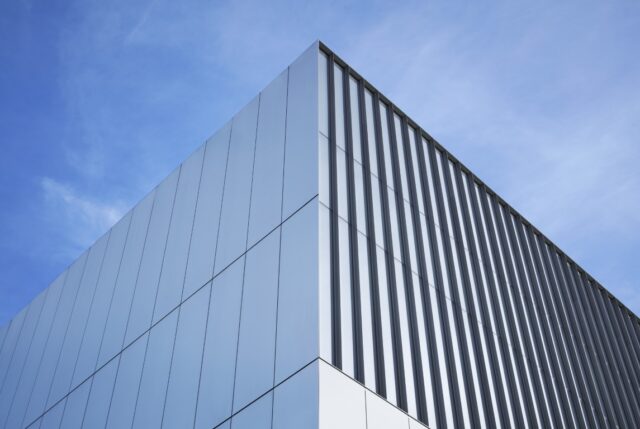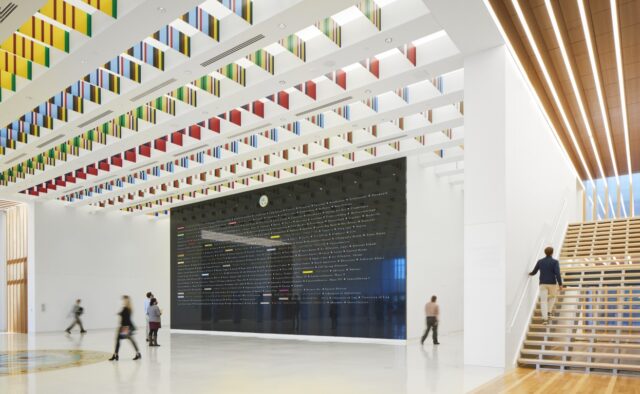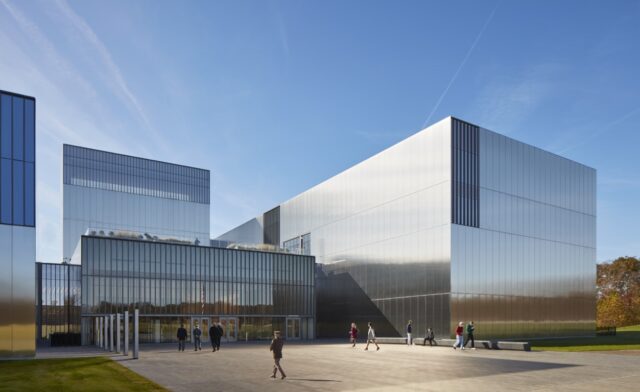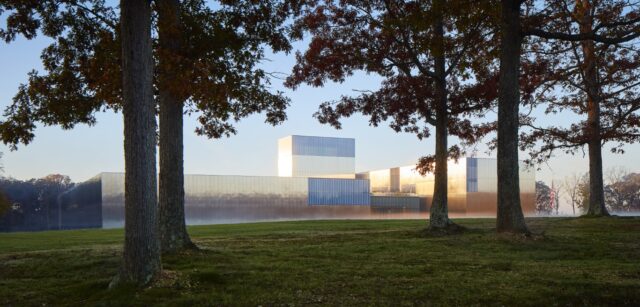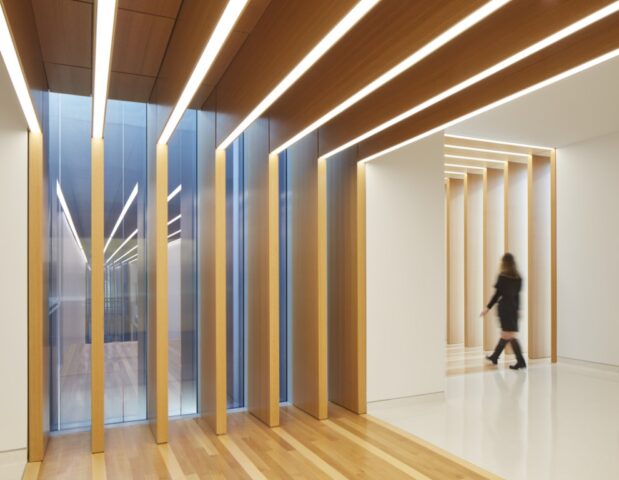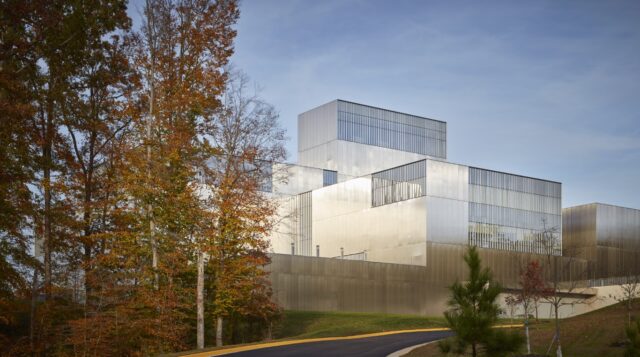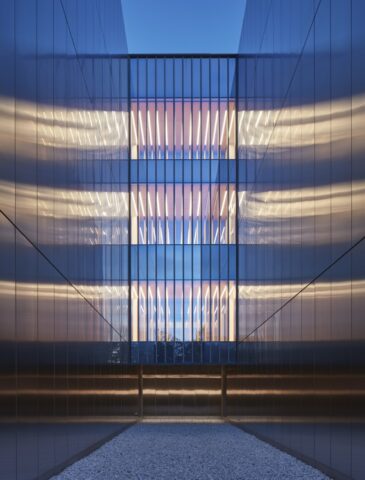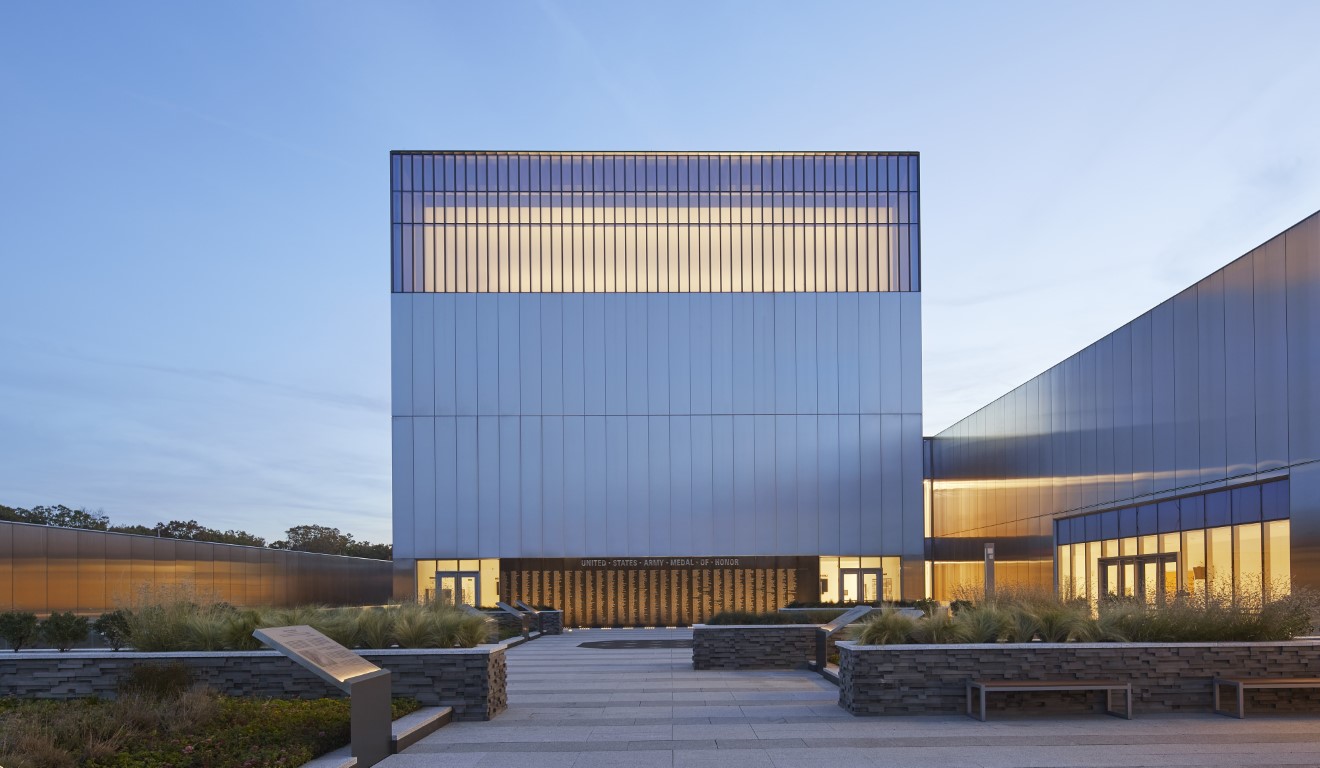Architects: Skidmore, Owings & Merrill
Area: 185000 ft²
Year: 2020
Photographs: Dave Burk © SOM
Text description and images are provided by the architects.
The National Museum of the United States Army (NMUSA), a cultural institution of national significance that is the first to tell the story of the oldest branch of the United States military. The building – which is located just 20 miles outside of Washington, D.C. – is designed to serve as a center of education, and the Army’s symbolic front door. By walking visitors through every generation of the Army, the museum focuses not on battles or wars, but on the individual soldier – a centuries-long narrative of honor, sacrifice, and valor.
Spanning 84 acres across the bucolic Fort Belvoir Military Installation in Virginia, the LEED Silver-certified museum is designed in a series of pavilions for exhibits and special events. Part of SOM’s design and planning for the future of the site also includes a quiet memorial garden, a parade field and grandstand, and an Army Trail with interpretive stations. The building, leveraging the site’s natural topography, rests atop a plateau to evoke a sense of monumentality.
The symbolic experience begins with the access road, which offers a glimpse of the stainless steel-clad museum through the trees and across a long meadow. The museum rises to 100 feet at its peak, and its facade is composed of a regular grid of laser-cut, stainless steel panels that establish the sense of rigor and discipline that is central to the design. The panels reflect their bucolic surroundings – expressing a sense of optimism by transforming the building’s character through every season and time of day. At the corner of each pavilion, recessed glass panels alternate with painted aluminum fins to add a sense of dynamism. Because the complex lies on a three-foot grid system, with every joint and edge of the building falling on each subdivision with precision, the aluminum fins are spaced 18 inches apart to fall exactly on the edges of the panels.
The symbolism continues inside. Stainless steel pylons sharing individual soldier stories lead visitors from the promenade, through the vestibule, and into the exhibition hall. In the grand lobby, which can be used as an event space, a black granite wall lists every campaign from the Army’s history, and the Department of the Army’s emblem is inscribed on the terrazzo floor. Above, a coffered ceiling with 22 rows of translucent, laminated glass panels matches the colors of the campaign streamers from the Army’s past – bringing the focus to the individual soldier. The lobby is surrounded by retail, a cafe, the first of three landscaped terraces, and exhibition spaces, which include a 300-degree theater. A monumental staircase leads visitors to additional exhibition spaces on the second floor.
Each of these surrounding spaces is characterized by natural materials, from stone floors to American white oak and ash finishes, to evoke a sense of warmth and relaxation. Glass and wood thresholds connect each pavilion to signify transitions between spaces and provide views outside. On the third floor, a wood-clad Veterans’ Hall serves as a light-filled event space supplementing the lobby. This space connects to the Medal of Honor Garden, a ceremonial terrace inspired by the core traits of Medal of Honor recipients: intrepidity, gallantry, and valor. Here, a 10-foot-tall black granite wall is engraved with the names of every medal recipient. Underfoot, striped granite paving matches the interior’s coffered ceilings, and is emblazoned with the Army Medal of Honor’s emblem and stainless steel stars.

